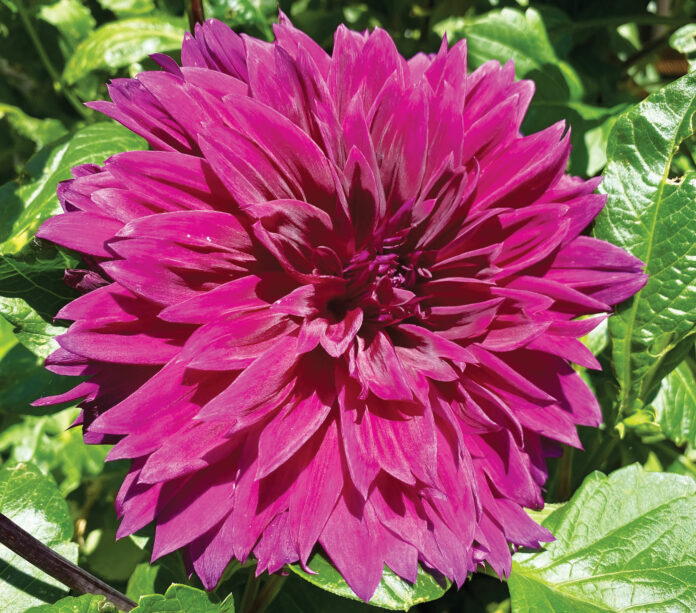
It’s that time of year when the dahlia exhibitions are held. I missed a couple already but the Santa Cruz County Fair is still going on this weekend and there’s always a huge display there. Last year a dark magenta cactus dahlia was my favorite. These mammoth flowers take longer to grow, I’m told, and fewer are produced by each plant, but boy, are they worth it.
I’m envious of those that have the right conditions in their garden to grow these awesome flowers. According to the American Dahlia Society, dahlia culture is similar to growing tomatoes. So if you can grow tomatoes in your garden, you can grow dahlias.
Dahlias are often referred to as the queen of the autumn garden. They are native to the mountainous regions of Mexico with history that dates back to ancient times. The Aztecs cultivated these remarkable plants for their edible tubers. Spanish explorers and botanists encountered dahlias during their journeys to the New World in the late 18th century. The first recorded description of the dahlia by a European was made by Francis Hernandes, Spanish physician in 1615.
The name dahlia honors Swedish botanist Anders Dahl, who studied them in the late 18th century. Over time, dahlias made their way to Europe, where they were cultivated, and by the 19th century, dahlias had become a symbol of elegance and refinement in Victorian gardens across Europe.
Dahlias need good drainage, fertile soil and at least six hours of sunlight per day. When planting, provide adequate spacing, usually around 18 inches between each plant to ensure good air circulation. They do well in pots, too.
Watering is crucial for dahlias, especially during the growing season. Apply mulch to retain moisture. Regular deadheading encourages continuous blooming throughout the growing season. Fertilize regularly and stake taller varieties.
Small dahlia plants are susceptible to slugs damage. Bait with Sluggo or remove slugs manually. Japanese beetles can eat dahlia blooms. Remove and put in a bucket of soapy water. Earwigs like dahlias, too. Trap them using rolled up newspaper.
Dahlia exhibit an astonishing array of shapes, sizes and colors. They are classified into cactus, pompous, anemone and ball dahlias. Popular dahlia varieties include the Dinnerplate Dahlias with gigantic blooms that can reach up to 12 inches in diameter. There are even tree dahlias that grow to 13 feet tall.
I’m looking forward to visiting Beeline Blooms Dahlia Farm in Ben Lomond soon. This farm says they grow several hundred varieties of dahlias. I can hardly wait.
Jan Nelson, a landscape designer and California-certified nursery professional, will answer questions about gardening in the Santa Cruz Mountains. Email her at ja******@*ol.com, or visit jannelsonlandscapedesign.com.











